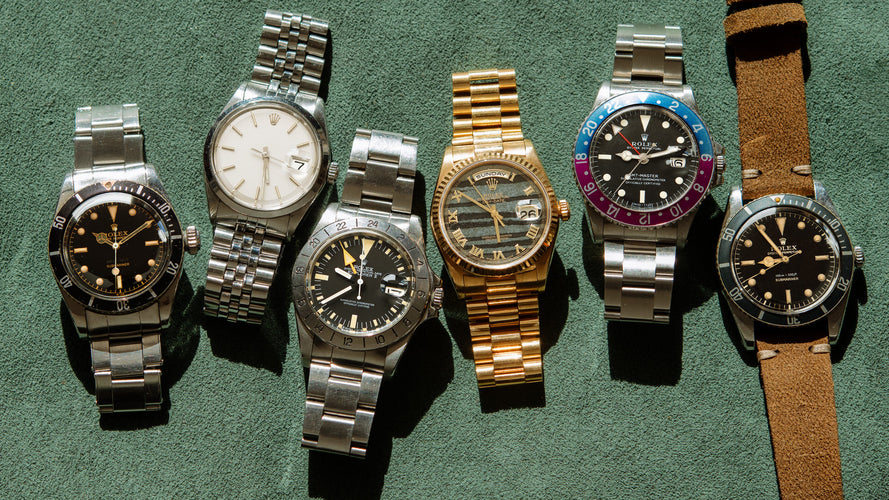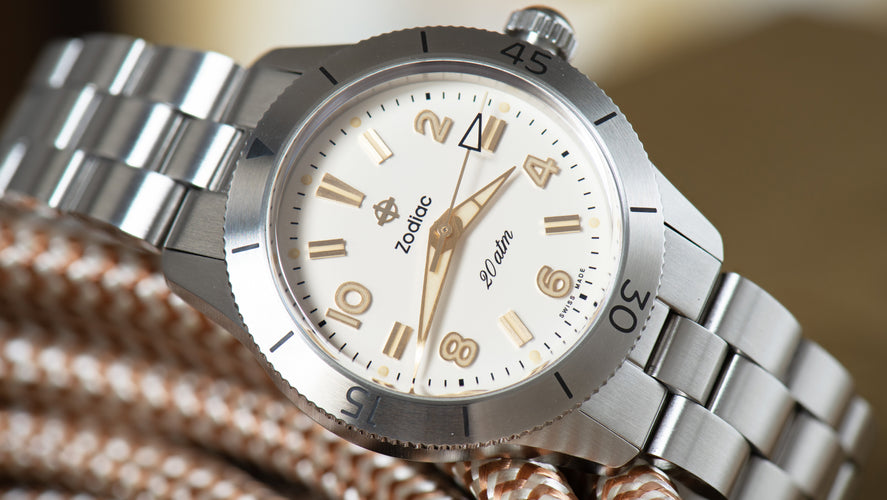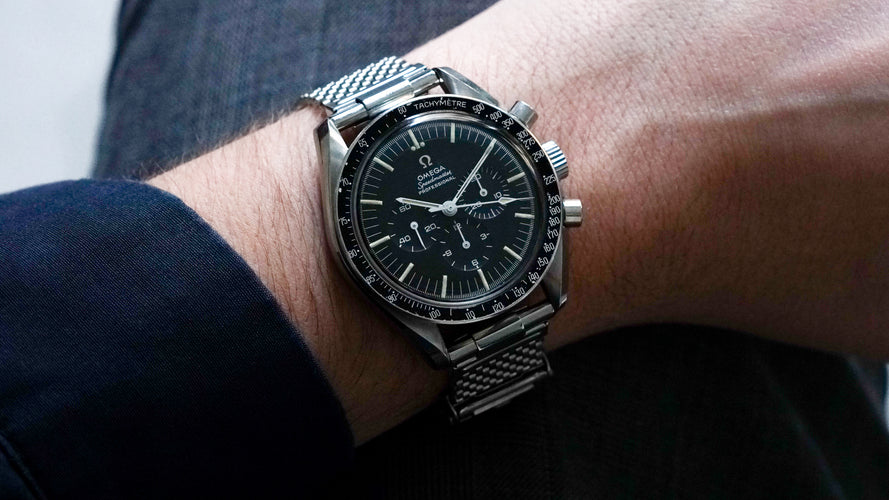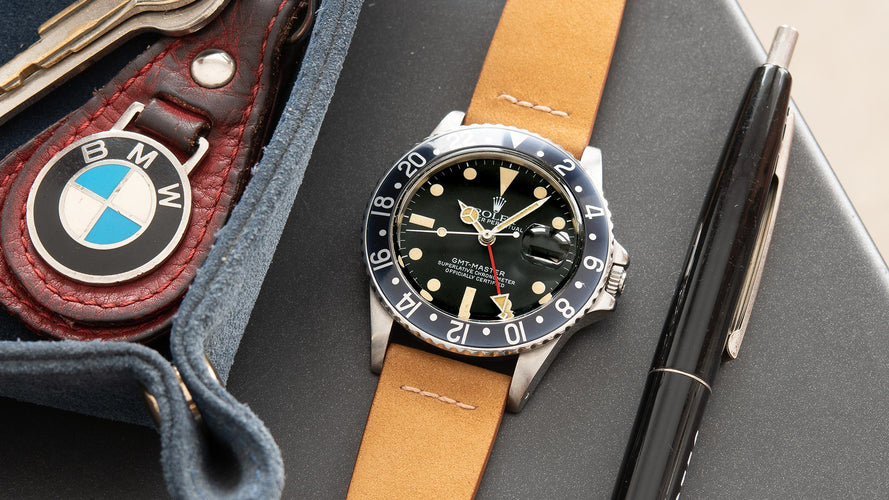Rolex
1972 Rolex COMEX Submariner (Ref. 5514) "Non-Serif" Dial
In the early 1960s deep-sea diving, particularly mixed gas diving, was rapidly advancing. COMEX, a French-based company, was the foremost pioneer in deep-sea experimentation and spearheaded most of the early research and technical advancements that came as a result of the maritime initiative. The COMEX Company is often referred to as the NASA of the Sea.
With the danger involved with diving into the unknown, COMEX required the most durable and state-of-the-art equipment to ensure their success and was often directly involved in the creation of the instruments they used in a collaborative effort with the manufacturer to ensure each piece met the exact application it was made for.
During the 1960s, the Rolex Submariner was the quintessential diver and set the design standard for most all dive watches that came after. However, the Rolex Submariner was never designed for deep sea operation as it was limited by its max depth rating of only 200m or 660ft. While the Submariner was widely used by COMEX in the beginning, the aquanauts quickly realized their Rolex would suffer catastrophic failure during saturation diving expeditions which would jeopardize their success rate. This led COMEX to work directly with Rolex in the development of a diving wristwatch that could meet the unique specifications and depths required by the aquanauts.
This now iconic collaboration between Rolex and COMEX resulted in the creation of the Sea-Dweller in 1967, which remains one of the most well-known wristwatch models in the world. The cornerstone of the Sea-Dweller was the groundbreaking invention of the helium escape valve or HEV, which allowed for the release of expandable gasses within the watch, which previously caused the watch to fail during the ascent of a submersible diving bell.
As the Rolex / Comex partnership continued through the 1970s, COMEX commissioned an exclusive Submariner model from Rolex, the ref. 5514, which was never released to the general public. The ref. 5514 Submariner melded the HEV technology of the Sea-Dweller with the already existing Submariner ref. 5513 platform for an extremely experimental COMEX dive watch. The Rolex ref. 5514 Submariner is often identified with the COMEX logo printed on the dial, along with the HEV on the side of the case, however, the dials of early models lack the COMEX logo on the dial entirely. It is understood among collectors that approximately 150 reference 5514s were created by Rolex.

Along with the HEV on the left side of the case, this Submariner features the 5514 reference stamped between the lugs. The inside of the case back is correctly stamped 5513 and is also engraved with the matching serial number of the mid-case. The watch predates the more recognizable "COMEX" signed dials, resulting in a far more incognito variation with the beautifully patinated and correct "non-serif" dial and original hands.
| Stock # |
RLXSM5514CMX |
|
| Brand | Rolex | |
| Style | Submariner "COMEX" | |
| Model | 5514 | |
| Serial | 380XXXX | |
| Size | Men's | |
| Material | Stainless Steel | |
| Dial | Matte Black | |
| Millimeters | 40 | |
| Bracelet | Rolex "Pateted" 9315 Folded-Link Oyster Bracelet W/ 380 End Pieces |
CASE & BRACELET
The very well-preserved case retains thick and symmetrical lugs that show slight chamfers and exhibit evidence of being minimally polished in the past with honest signs of use present. The left side of the case features the HEV. The Mk III "fat font" bezel insert remains deep black in color, exhibits almost no signs of use, and retains its tritium pearl. The case back features its original COMEX engravings, though the small COMEX inventory number is no longer visible, this is common on these variants due to the faint initial application of the number. The inside of the case back is engraved with the matching serial to the mid-case. The original "Pateted" Rolex 9315 folded-link Oyster bracelet with 380 end pieces retains 11 links that display nominal stretch and will fit up to a 7 1/2-inch wrist.
DIAL & HANDS
The original matte black non-serif dial is in beautiful vintage condition, showing subtle elements of age, most notably are some tonal marks above the hand stack that are invisible to the naked eye but were likely caused by a watchmaker removing the hands in a previous service. The tritium lume plots have achieved a golden-yellow patina and show no degradation when inspected under UV light. The original tritium hands match the dial patina perfectly, under UV light inspection the minute hand exhibits some nominal superficial cracking and remains stable while the rest of the hands display no degradation whatsoever.
ACCESSORIES
None. The watch is keeping time, but the service history is unknown. A movement service can be provided upon request.



